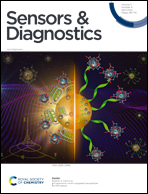The impact of analyte size on SERS enhancement location, enhancement factor, excitation wavelength, and spectrum
Abstract
The study systematically explores the connection between analyte particle size and the hot-spot in Au nanoparticle (NP) dimer systems. Contrary to the conventional understanding tied to localized surface plasmon resonance (LSPR), we show that depending on the analyte particle's size, the location to produce surface-enhanced Raman scattering (SERS), defined as effective hot-spot, is different from the gap based hot-spot, where the electric field reaches maximum intensity, and the corresponding resonant wavelength is also shifted significantly from LSPR wavelength. This effective hot-spot occurs primarily at the point where the Au NP contacts the analyte particle, covering a larger area than the traditional hot-spot and having a significantly smaller enhancement factor. Moreover, different effective hot-spots can be activated under various polarizations. The local electric field versus distance relationship decays significantly slower, complicating the interpretation of SERS spectra of large analyte particles. This complexity offers tunability, allowing for a more precise representation of unique molecular features of the analyte. Consequently, our findings demonstrate the necessity for SERS substrate design rules to be contingent on analyte particle size. Although interpreting SERS spectra is intricate, it can be refined to effectively capture distinctive molecular characteristics. These insights pave a new way to tailor SERS substrate design specifically catering to large analyte particles.



 Please wait while we load your content...
Please wait while we load your content...